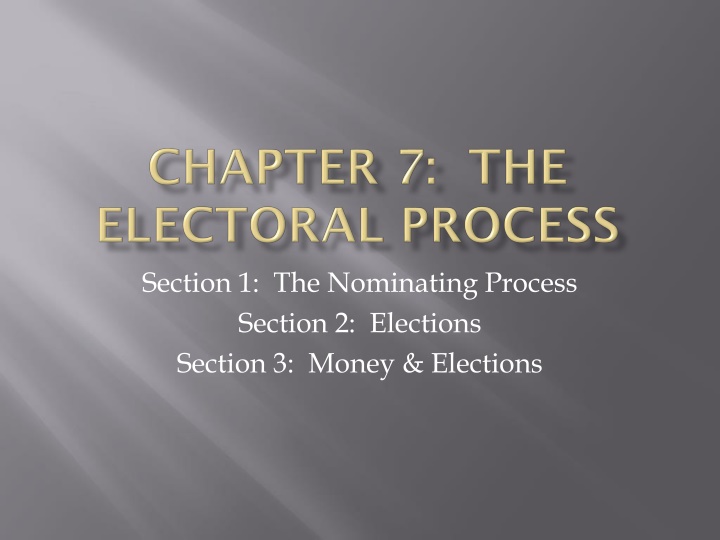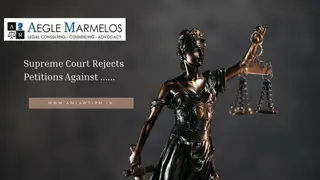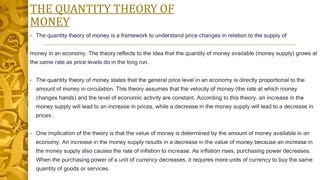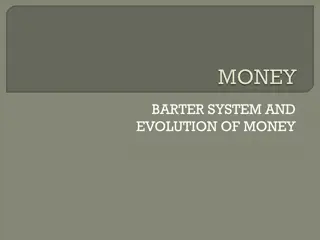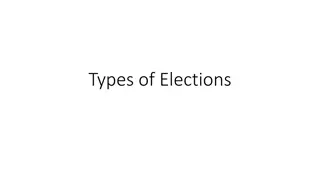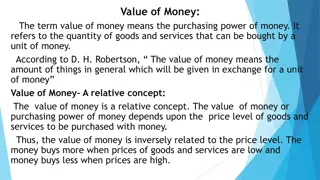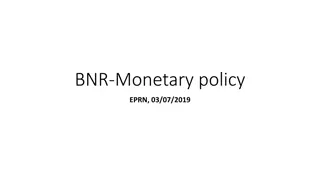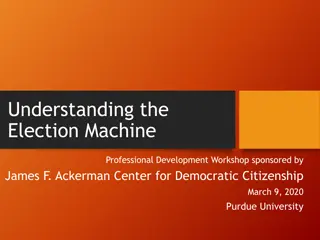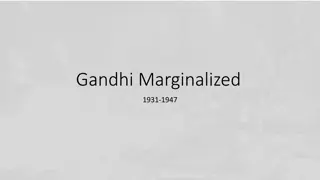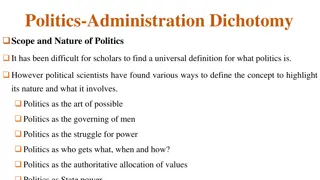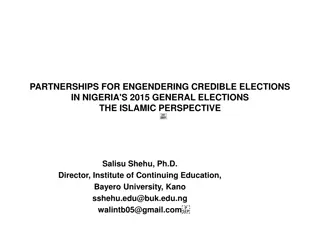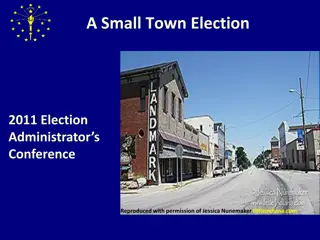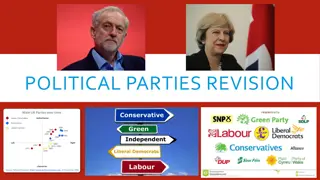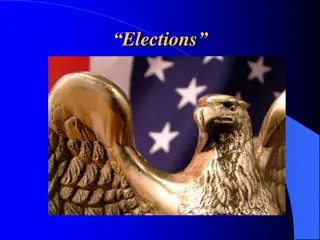Process, Elections, and Money in Politics
General elections, caucuses, primaries, and different election processes explained. Understand subsidies, hard money, soft money, and the role of PACs in electoral politics. Learn about the coattail effect and different forms of the nominating process.
Download Presentation

Please find below an Image/Link to download the presentation.
The content on the website is provided AS IS for your information and personal use only. It may not be sold, licensed, or shared on other websites without obtaining consent from the author.If you encounter any issues during the download, it is possible that the publisher has removed the file from their server.
You are allowed to download the files provided on this website for personal or commercial use, subject to the condition that they are used lawfully. All files are the property of their respective owners.
The content on the website is provided AS IS for your information and personal use only. It may not be sold, licensed, or shared on other websites without obtaining consent from the author.
E N D
Presentation Transcript
Section 1: The Nominating Process Section 2: Elections Section 3: Money & Elections
General Elections regularly scheduled elections at which voters make the final selection of officeholders. Caucus a group of like-minded people who meet to select the candidates they will support in an upcoming election. Direct Primary an intraparty election and is held in order for a party to pick candidates for the general election. Closed Primary a nominating election in which only declared party members can vote. Open Primary a party s nominating election in which any qualified voter can cast a ballot.
Blanket Primary a different version of the open primary sometimes called the wide-open primary Runoff Primary an election that is held if no one wins a majority in a race. Nonpartisan Elections elections in which candidates are not identified by party labels. Ballot the medium by which a voter registers a choice in an election. Absentee Voting a process by which voting can take place without going to the polling place on election day.
Coattail Effect occurs when a strong candidate running for an office at the top of the ballot helps attract voters to other candidates on the party s ticket. Precinct a voting district Polling Place the place where voters vote within their precinct. Political Action Committees (PACs) the political arms of special interest groups and other organizations with a stake in electoral politics.
Subsidy a grant of money, usually from the government. Hard Money those contributions that are given directly to candidates for their campaigns. Soft Money funds given to parties or to other political organizations , in unlimited amounts, to be used for party-building activities .
Self-Announcement Oldest form of the nominating process. A person who wants to run for an office simply announces that fact. Caucus A group of like-minded people who meet to select the candidates they ll vote for in an upcoming election. Convention Took the place of the collapsing caucus method. How all Presidents have been picked. Best suited for representative government.
Direct Primary Intraparty election held within a party and used to elect the party s candidates for the general election. Petition Candidates for public office are nominated by means of petitions signed by a certain number of qualified voters in the election district.
4 main components: 1. Is provided at public expense. 2. Lists the names of all candidates in an election. 3. Is given out only at the polls, one to each qualified voter. 4. Can be marked in secret.
Bed-Sheet Ballot The typical ballot in America is very lengthy and therefor referred to as this. Ballot Fatigue The drop off in voting that can occur as voters get to the end of a lengthy ballot.
No one really knows exactly just how much money is spent on political campaigns in the United States. Money for campaigns usually comes from 2 sources: 1. private contributors and 2. public treasury.
A.K.A. FEC Administers all federal law dealing with campaign finance. Set up by Congress in 1974 & is made up of 6 members who are appointed by the President and confirmed by the Senate. Located in the executive branch.
The laws that the FEC enforces cover 4 broad areas: 1. They require the timely disclosure of campaign finance data. 2. They place limits on campaign contributions. 3. They place limits on campaign expenditures. 4. They provide public funding for several parts of the presidential election process.
Independent political action committees that are unaffiliated with any political party. They are allowed to raise and spend unlimited amounts, although they must reveal their donors and cannot work directly with a candidate s campaign.
